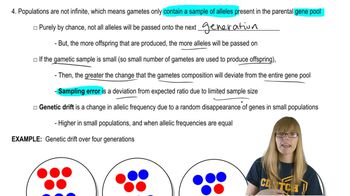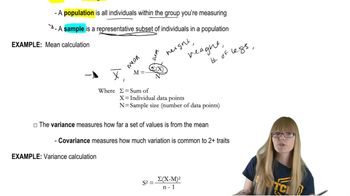Here are the essential concepts you must grasp in order to answer the question correctly.
Genetic Variation in Populations
Genetic variation refers to the differences in DNA sequences among individuals within a population. It is essential for evolution, as it provides the raw material for natural selection. Measuring changes in allele frequencies over time helps determine if a population's genetic structure is static or dynamic.
Recommended video:
Forces Affecting Genetic Structure: Selection and Drift
Natural selection and genetic drift are key evolutionary forces that alter allele frequencies. Selection favors alleles that increase fitness, while drift causes random fluctuations, especially in small populations. Observing these forces' effects helps assess whether genetic variation is stable or changing.
Recommended video:
Population Genetic Structure and Its Measurement
Population genetic structure describes the distribution of genetic variation within and between populations. Tools like allele frequency analysis, Hardy-Weinberg equilibrium tests, and molecular markers allow scientists to detect changes over time, indicating whether the genetic structure is static or dynamic.
Recommended video:
Mathematical Measurements
 Verified step by step guidance
Verified step by step guidance Verified video answer for a similar problem:
Verified video answer for a similar problem:

